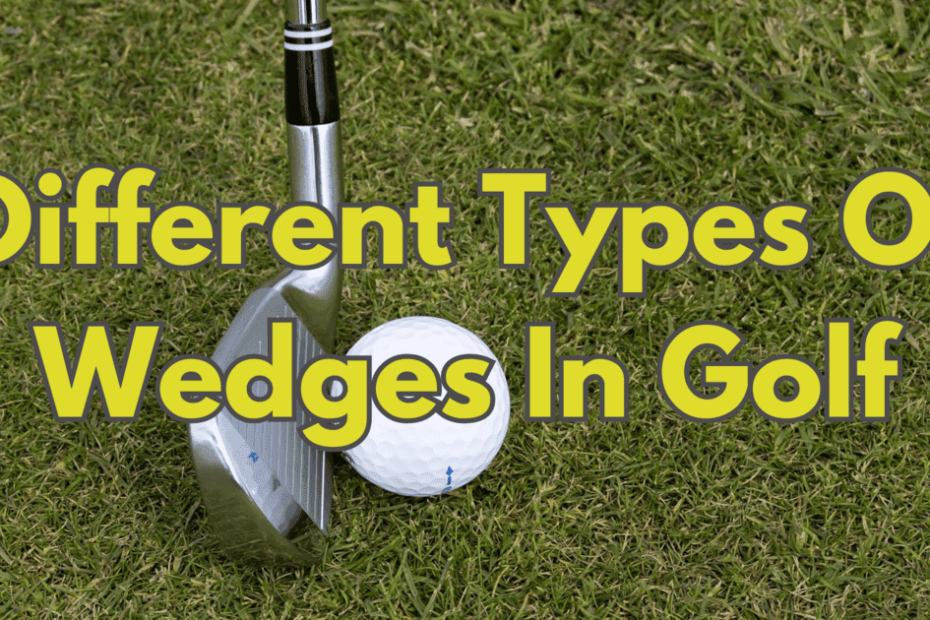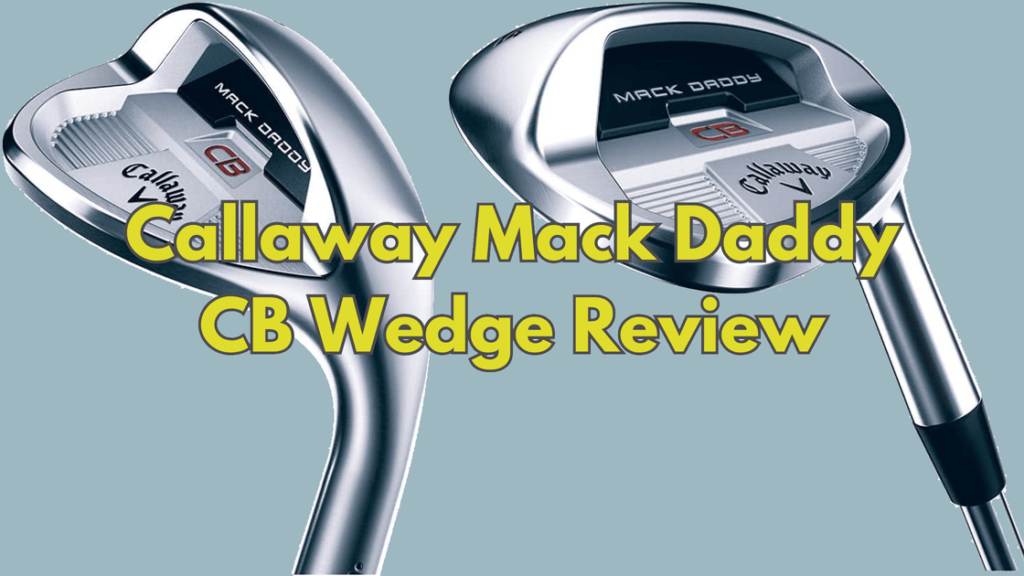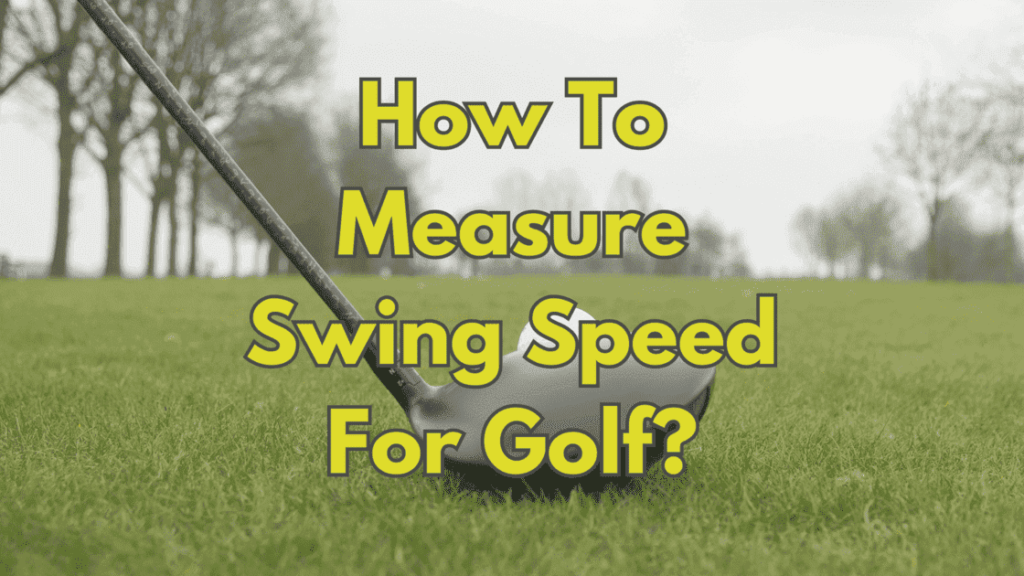Have you ever wondered what are the different types of wedges in golf, or what they are used for? Well, in this article we will try to answer all your questions of wedges.
We are all looking for a method to improve our handicap. However, most people spend hours on the driving range trying to add 20 feet to their tee shot when, in truth, your wedge game is where your focus should be.
Did you know that 70% of your shots will be from inside 100 yards?
Or that 80% of your handicap will be decided by these shots?
As you can see, wedges play a crucial role in your overall game. Having the correct wedge in your hands can make all the difference to your scorecard.
So, how do you know which is the right wedge to use?
That’s a bit of a complicated question to answer. But we will try!
First, we will go through the four different types of wedges. The pitching wedge (PW), the gap wedge (GW), the sand wedge (SW) and the lob wedge (LW).
Next, we will explore some of the technical features and the impact these have on your shot and therefore club selection. This includes loft, bounce, grooves, flex, shaft, leading edge, and sole grind.
What are the different wedges in golf used for?
Well, this is not as simple as the question first appears. This depends on the terrain of the course itself, any obstacles, and distance to the pin.
We’ll get into more of the technical stuff later in the article, but to understand the main differences between the various types of wedges, we need to understand loft.
The loft of a wedge is the angle between the clubface and the ground when the club is held in a neutral position. The greater the loft angle the higher the shot trajectory and the shorter the distance.
Pitching Wedge (PW)
The first type of wedge we are going to look at is the pitching wedge. With a loft angle of 45-50 degrees, they have the largest range of any wedge, and are best used for approach shots within 120 yards of the pin. They can be used for chip shots that require a low trajectory. The pitching wedge is almost always included in a typical set of golf clubs.
Sand Wedge (SW)
Sand wedges, as the name might suggest, are designed primarily for taking shots from within bunkers. They have a loft angle of 54-58 degrees which creates a relatively high trajectory however, they tend to have a max range of 70-90 yards. They also tend to have the largest sole of the wedges which is advantageous for striking on soft surfaces, but more on that later.
But bunker shots are not the only use for a sand wedge. Many golfers take advantage of the loft angle when taking approach shots uphill. This will naturally create a flatter trajectory and allows for a more accurate approach.
Gap Wedge (GW)
Gap wedges are the most recent type of wedge to enter the market. They are so called as they “fill the gap” between the pitching wedge and the sand wedge. Gap wedges have a loft ranging from 50-54 degrees for a higher trajectory than a pitching wedge and a greater distance than a sand wedge. Best suited for approach shots of about 80-100 yards.
Lob Wedge (LW)
Lob wedges are the go-to club for short range approach shots and are best suited for shots inside 30 yards. With a large loft angle of 58-64 degrees, they not only have the highest trajectory but are usually designed to generate lots of backspin (more on this in a sec) to reduce roll on the green. This makes them very accurate in the hands of an experienced golfer.
Lob wedges can also be very useful for escaping from bunkers that have a high lip, such as a bunker on a downhill lie with the green above it. They give you that little extra pop and can easily save you getting trapped and adding 5 strokes to your round.
Key Features of a Golf Wedge
Loft
Loft measures the angle between the clubface and the shaft. The purpose of the loft angle is to create a specific trajectory, with greater loft angles creating a higher trajectory at the expense of shot distance.
But loft is not exclusive to wedges. In fact, all golf clubs will have a loft angle including drivers, woods, irons, and putters.
Now to the practical application of loft angles in wedges, how many wedges do you need in your bag for a round?
Well, we recommend at least 3, but 4 is probably the best setup.
When choosing your wedges for your bag, it is important to keep the loft gap uniform. This means that the difference in loft angle of each club should be roughly equal.
Our recommended setup is as follows:
46/48-degree pitching wedge
50/52-degree gap wedge
56-degree sand wedge
60-degree lob wedge
That setup gives you a 4-6 degree gap between each wedge, giving you many shot choices for various distances and trajectories.
Leading Edge, Trailing Edge, & Sole
The leading edge is the very bottom of the clubface. Think of this as where the face meets the bottom of the club.
Whereas the trailing edge which, as you may have guessed, is the back of the clubface.
The sole is the bottom of the very bottom of the club. Think the sole of a shoe.
You should never strike the ball with the leading edge. This will result in a kind of mis-hit shot that skips along the floor with very little power. Instead, you want to strike slightly downward so that the leading edge and trailing edge contact the ground evenly with the sole gliding across the surface rather than digging into it.
Bounce
One of the trickier concepts to wrap your head around is the bounce, but here goes!
Bounce describes the height of the leading edge when the sole is grounded in a neutral position. When we say “bounce”, we really mean “bounce angle”. This can be measured by the angle between the ground and the line from the sole’s surface to the leading edge. Imagine the negative space.
That might be a little confusing, so let’s look at the different types of bounce wedges to make more sense of this.
Low-Bounce Wedges
Low-bounce wedges refers to a club that has a bounce of angle of between 4-6 degrees. This means that the leading edge sits virtually flush with the ground. This makes them ideal for playing on firm surfaces including heavy sand. Any condition where the clubhead is not going to dig in. This allows you to consistently connect with your face’s sweet spot without digging into the ground with the leading edge or the sole ricocheting off the ground.
But it’s not only the playing surface that influences your choice in bounce angle. The technique of your natural swing will play a pivotal role too. Golfers with a shorter swing, a more downward strike, should opt for a smaller bonce angle. Whereas players with a more rounded, looping stroke, would be better served by a wedge with a larger bounce angle.
Common clubs with a low-bounce option are usually pitching wedges and gap wedges.
Medium-Bounce Wedges
Clubs with a bounce angle between 7-10 degrees are called medium bounce wedges and are exceptionally versatile. High, mid, and low handicap players use medium-bounce wedges in almost any condition.
Gap wedges, sand wedges and lob wedges commonly have medium-bounce options.
High-Bounce Wedges
High-bounce wedges have a high leading edge that sits well above the playing surface. This is especially useful when playing on softer surfaces, such as damp moist ground or bunker shots with soft sand. The higher bounce angle enables a smoother stroke and avoids digging in. If you struggle with divots, your best bet is a high-bounce wedge.
Sand wedges and lob wedges commonly have high-bounce options.
Grooves
All wedges have grooves on the club face but what exactly is the purpose of these? Are they even needed?
In short, YES, they are needed! This is for two reasons.
First, they allow sand, moisture, and dirt, to slide of more easily. A few swings through the air will dislodge most debris. This is the same process that keeps your tire tread clear while driving. This gives you a clean, consistent contact.
Second, is to provide backspin on the ball. This can greatly reduce the roll of the ball when it hits the green leading to much increased accuracy of approach shots.
You will find that your wedge’s grooves become dull over time. You must be sure to get your groove’s inspected and sharpened about every 50 rounds.
Sole Grind
As the name suggests, this refers to the shape of the sole of the club. Virtually all wedge manufacturers shape the soles of their wedges, usually tailored to a specific surface, e.g. sand, fairway etc.
However, in our experience we’ve found the sole grind actually depends more on your swing style than the surface you’re playing from.
For example, a heel grind has more material removed from the back end of the club. This has the effect of opening up the clubface for some spectacular flop shots. In fact, this is the very reason Tiger Woods has a heel grind on his lob wedge.
Unfortunately, each golf club manufacturer will have slightly different shapes and depths to their grinds. They do offer near enough the same shot making ability, you may need to experiment with a few different brands to see which you prefer.
Flex
But of course, a wedge is more than just a clubhead. Let’s talk about the other major component, the shaft.
Flex is pretty self-explanatory. This describes the degree to which the shaft bends during the swing. Most shafts for wedges have a light and flexible make up. This allows the clubhead to “whip” through the ball for a higher trajectory and increased backspin.
The biggest factor to consider when deciding the flex for your wedges, is how you are going to use them. As a general rule, the more often you take full or ¾ swings with your wedge the less flex you want. This means that you probably need more stiffness (less flex) for your pitching wedge than for your lob wedge. It is rare that you would ever take a full swing with a lob wedge. Our recommendation is to have the same shaft flex for your pitching wedge as you do for your irons.
When shopping for wedges, there are six different flex strengths that you will encounter. Here is a list from least flex to most flex:
Extra stiff flex
Most stiff shaft available, for golfers who can easily drive the ball 300-plus yards.
Stiff flex
For golfers who drive 250-300 yards, typically with low handicaps.
Wedge flex
A little less-stiff shaft made for mid-to-low handicap golfers who use a stiff flex shaft on their irons but want slightly more accuracy with approach shots.
Regular flex
This is usually less stiff than wedge flex although not always. Depends on the manufacturer. For golfers who drive 200-250 yards, generally with mid-to-high handicaps.
Senior flex
For golfers who drive 180-200 yards, commonly older male golfers.
Ladies flex
This is the least stiff shaft available. For golfers who drive under 200 yards, usually female golfers. Although this is a good option for beginners too.
Hopefully, this should help you narrow down the vast amount of choice you have when selecting your wedges. In truth, personal preference and playing style, are also important factors. Experiment until you find a stiffness that suits your game.
Shaft Construction
This brings us nicely to a classic question, graphite, or steel?
Well, this will depend mostly on your power and, essentially, your handicap.
Graphite
Graphite shafts are a lightweight option with more flex than steel shafts. This makes them more suited for golfers with a lower swing velocity who struggle to hammer the ball 250-300 yards or more. The lighter frame of the graphite shaft makes them much easier to handle. Whilst the extra flex helps generate extra power on your shots. Although this does come at the cost of some control and accuracy.
Steel
Steel shafts on the other hand, are stiffer and heavier than their graphite counterparts, making them more suited for golfers with decent swing velocities and power. The vast majority of low-handicap players use steel shafts as the stiffer shaft gives them better clubhead control and precision on approach shots. They sacrifice distance for this, but ultimately have enough power to compensate.
However, every golfer will have a mix of both steel and graphite shafts within their course set.
Drivers are always graphite shaft with high flex to generate maximum power for the tee shot.
Irons can be either depending on the players preferences.
Wedges are also player dependent. Most golfers choose to play with the same shaft as their irons, although this isn’t always the case. However, it does lead to better consistency when switching clubs.
For golfers who use graphite irons and wedges the sand wedge is usually an exception. Many graphite loving golfers use a steel shaft for sand wedges to give them more control and accuracy for tricky bunker and short distance approach shots.
Putters are always steel shafts for a smooth accurate stroke.
Experiment with shaft material until you find your ideal set-up. You will have to make changes as your game improves to ensure that your handcap doesn’t sit in a plateau.






